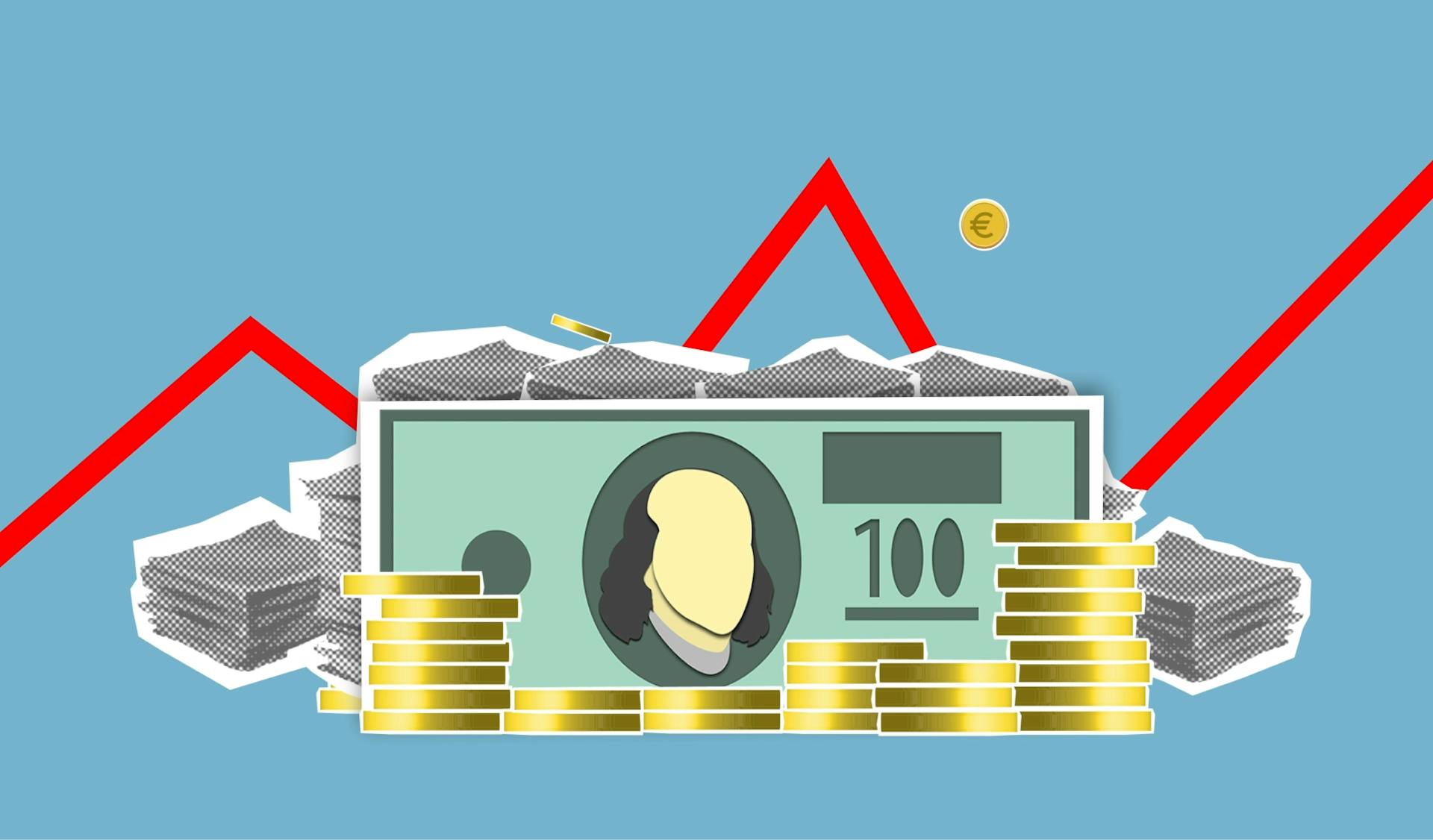
Common share equity plays a crucial role in corporate finance, serving as a vital source of funding for businesses. It's a way for companies to raise capital without taking on debt.
A key benefit of common share equity is that it allows companies to tap into a large pool of potential investors. This can be especially useful for startups or small businesses that may not have access to traditional funding sources.
Common share equity also gives investors a stake in the company, which can be a major motivator for investing. In fact, many investors are willing to take on more risk in exchange for a potential higher return on investment.
By issuing common shares, companies can also increase their market capitalization, making them more attractive to investors and potentially boosting their stock price.
If this caught your attention, see: Investors in Common Stock
What is Common Share Equity
Common share equity is a share of ownership in a company that gives its owner the right to vote on the company’s leadership.
As a shareholder, you own a residual claim to the company's profits and assets, which means you are entitled to what's left after all other obligations are met. This can be a significant advantage, but it also means you're last in line to get any money from the company's assets if it goes bankrupt.
Common stock is typically traded on exchanges, such as the New York Stock Exchange (NYSE) or Nasdaq, where larger U.S.-based stocks are listed. The NYSE is the largest exchange in the world by market cap, with thousands of companies listed.
In the event of bankruptcy, owners of the company's bonds and preferred stock take priority over common stock owners, who are last to get any money from the company's assets. This is a unique downside to common stock ownership.
The decision to distribute dividends, which are paid out of a company's earnings, is made by the board of directors taking into account factors like company performance, future capital requirements, and broader financial goals.
Components of Common Share Equity
Common Share Equity is composed of several key components, each playing a vital role in a company's financial structure. Common Stock and Additional Paid-In Capital (APIC) are the main contributors, making up a significant portion of the equity.
Common Stock represents the face value of outstanding shares, while APIC accounts for the excess value paid by shareholders above the par value. This excess value is a result of the issuance price of equity often exceeding the par value.
Here's a breakdown of the key components of Common Share Equity:
Retained Earnings, on the other hand, represent the accumulated net profits that a company holds onto, rather than paying dividends to shareholders. This line item can contribute a significant percentage of shareholders' equity, especially for mature companies with consistent profitability.
Additional Paid-in Capital
Additional Paid-in Capital (APIC) is the excess value paid by shareholders above the par value of the shares issued.
The par value of shares is the face value, but the issuance price often exceeds this by a substantial margin. This excess value is recorded in the APIC line item.
Discover more: The Par Value per Share of Common Stock Represents the
APIC is typically coupled with Common Stock as a standard modeling convention.
Here's a breakdown of the components of APIC:
The APIC line item on the balance sheet reflects the value of shares issued at a price higher than their par value.
Retained Earnings (Accumulated Deficit)
Retained Earnings (Accumulated Deficit) is a key component of shareholders' equity, making up a significant portion of a company's balance sheet. It represents the accumulated net profits that the company holds onto, rather than paying out as dividends to shareholders.
For mature companies, Retained Earnings can be the largest contributor to shareholders' equity, often accounting for the highest percentage. This is because these companies tend to reinvest their profits, rather than distributing them to shareholders.
The calculation for Retained Earnings is straightforward: Beginning Period Retained Earnings + Net Income - Shareholder Dividends Issued = End of Period Retained Earnings.
Let's look at an example of how this calculation works. Suppose a company starts with a beginning period balance of $500,000 in Retained Earnings. In the current period, it earns $40,000 in net income and pays out $2,500 in common dividends. The updated Retained Earnings balance would be $537,500.
Here's a breakdown of the Retained Earnings calculation:
- Beginning Period Retained Earnings: $500,000
- Net Income: $40,000
- Shareholder Dividends Issued: $2,500
- End of Period Retained Earnings: $500,000 + $40,000 - $2,500 = $537,500
Calculating Common Share Equity
Calculating common share equity can be a bit tricky, but it's essential to understand the basics. The APIC, or Additional Paid-In Capital, is a crucial component of common share equity.
APIC can be calculated using a simple formula: Additional Paid-In Capital (2021) = $25,000 Total Capital Raised – $1,000 Common Shares @ $1.00 Par Value = $24,000.
This formula shows that the excess value above the par value is $24,000, which is a significant amount.
The par value of a common share is the minimum amount that must be paid to purchase the share. In this example, the par value is $1.00, and the total capital raised is $25,000.
To calculate the common share equity, we need to consider the total capital raised, the par value, and the APIC.
Here's a breakdown of the common share equity calculation:
- Common Stock: $1,000 (par value)
- APIC: $24,000
- Total Common Share Equity: $25,000 (total capital raised)
Impact of Buybacks on Common Share Equity
Share buybacks can have a significant impact on common share equity. Companies often repurchase their own shares, reducing the total outstanding share count and net dilution.
If this caught your attention, see: What Are B Shares
This process is referred to as treasury stock, which involves shares previously issued by the company being bought back in the open market or directly from shareholders. The repurchased shares can no longer trade in the markets, so treasury stock must be deducted from shareholders' equity.
The decline in equity value occurs due to the book value of equity, rather than the market value. This means that the reduction in equity is calculated based on the company's accounting records, rather than the current market price of the shares.
Share buybacks can send a positive signal to the market, similar to issuing dividends, without the obligation to maintain the repurchases. This can be beneficial for shareholders, as it can lead to an increase in earnings per share (EPS) due to a lower share count.
The treasury stock line item is a contra-equity account, meaning it carries a debit balance and reduces the net amount of equity held. In the example given, the treasury stock line item is -$25,000, which is the result of a $5,000 share repurchase in 2021, subtracted from the beginning balance of -$20,000.
Here's a breakdown of how the treasury stock calculation works:
* Treasury Stock (2021) = -$20,000 (beginning balance) - $5,000 (repurchases) = -$25,000
Ratios and Values
The shareholders equity ratio measures the proportion of a company's total equity to its total assets on its balance sheet.
This ratio is a method to ensure the amount of leverage used to fund the operations of a company is reasonable.
It's a way to compare total equity to total assets belonging to a company, giving you a clear picture of the proportion of the asset base financed via equity.
A high equity ratio indicates that a company is well-funded and has a strong financial position, while a low ratio may suggest that the company is over-leveraged and at risk of financial instability.
Additional reading: Brk B Shares Outstanding
What Is the Ratio?
The shareholders equity ratio is a measure of a company's proportion of total equity to its total assets on its balance sheet. It's a way to compare equity to total assets, giving you a sense of how much of the company's asset base is financed via equity.
This ratio is also known as the equity ratio, and it's used to ensure the amount of leverage used to fund a company's operations is reasonable.
You might like: Authorized Common Stock Refers to the Total Number of Shares
Book Value vs. Market Value
As you dive into the world of finance, you'll encounter two terms that might seem similar but are actually quite distinct: Book Value and Market Value. The Book Value of Equity is a historical measure recorded on the balance sheet for bookkeeping purposes.
It's calculated by looking at the company's assets minus its liabilities, and it's a snapshot of the company's financial health at a specific point in time. In contrast, the Market Value of Equity is the pricing of the company's shares on the stock market.
This means it's influenced by the current share price and the total number of shares outstanding. The Market Value can be significantly higher than the Book Value, often by a substantial margin.
Here's a quick comparison of the two:
Pros and Cons
As you consider investing in stocks, it's essential to weigh the pros and cons of each type. Common stock can be more frequently traded than preferred stock, which can be beneficial for those who like to stay active in the market.
Higher potential returns are also a possibility with common stock. On the other hand, you may not receive dividends, and your priority to receive dividends or in the event of bankruptcy is lower.
One of the key advantages of preferred stock is its higher priority to receive dividends. This means you're more likely to get paid out before common stockholders.
Additional reading: Preferred Stock Carries Priority over Common Stock
Common Share Equity and Financial Statements
Stockholder's equity is recorded under the header of a stockholder's equity section in a company's Balance Sheet.
This section provides valuable insights into the book value of a company's shares, also known as net worth.
The book value of a company's stock is the amount shareholders would receive in the case of a liquidation.
Growing companies often trade several times more than their book value.
Conversely, struggling companies may trade below their share's book value.
Intriguing read: Book Value per Share of Common Stock Formula
Balance Sheet
The Balance Sheet is a crucial financial statement that provides valuable insights into a company's financial health. It's typically where you'll find information about common stocks, which are recorded under the stockholder's equity section.
The stockholder's equity section shows the book value, also known as the net worth, of a company's shares. This amount represents the company's intrinsic value and is used to estimate how much shareholders would receive if the company were to be liquidated.
Growing companies often trade at several times their book value, which can be a sign of their potential for growth and success. Companies that are struggling, on the other hand, may trade below their share's book value.
If this caught your attention, see: Trade Working Capital
Balance Sheet Assumptions
When forecasting a company's financial statements, it's essential to understand the assumptions behind the numbers.
In our hypothetical company, we'll start with the shareholders' equity balance for fiscal years 2021 and 2022.
We'll assume the common stock and additional paid-in capital (APIC) remain at $100,000 for both years.
The retained earnings, on the other hand, will be $500,000.
Treasury stock, which represents the company's own shares repurchased, will be -$20,000.
Here's a summary of our assumptions:
- Common Stock and APIC: $100,000
- Retained Earnings: $500,000
- Treasury Stock: -$20,000
We'll also assume that the "Other Comprehensive Income (OCI)" line item remains constant at $5,000 for both 2021 and 2022.
Dividends
Dividends are a way for companies to distribute profits to their shareholders. Preferred stockholders get specified dividends based on the share's par or face value and the dividend rate of the stock.
Preferred stockholders have priority over common stockholders when it comes to receiving dividends. If a company doesn't have enough money to pay all stockholders, preferred stockholders get paid first.
Businesses can choose whether or not to pay dividends to common stockholders. If a company skips dividend payments, holders of cumulative preferred stock can accumulate the missed payments as "dividends in arrears".
A fresh viewpoint: Common Stock Dividend
Common Share Equity and Investing
Common stocks are not suitable for risk-averse investors due to their significant risk associated with them.
Investors with strong risk appetite and a significant investment horizon can find common stocks a viable investment option, as they come with significant growth potential.
The prices of common stocks are subject to volatility, causing them to fluctuate frequently.
Here's a summary of the advantages and limitations of common stocks:
How to Invest
Stocks can be a great way to grow your wealth, but they come with greater risk than other investments like CDs and bonds.
Over the long term, stocks tend to outperform other investments, but in the short term, they can be quite volatile.
Growth stocks belong to companies expected to experience increasing earnings, which raises their share value.
Value stocks, on the other hand, are priced lower relative to their fundamentals and often pay dividends.
Large-cap stocks are more frequently traded and usually represent well-established, stable companies.
Small-cap stocks often belong to newer, growth-oriented firms and tend to be more volatile.
Investing in preferred stock requires a different approach than common stock, and researching the issuing company is essential.
A better yield on preferred stock can result in greater returns, so be sure to compare the dividends you'll receive relative to the share price.
Callable preferred stocks can be repurchased by the issuer at a preset date and price, causing you to miss out on future dividends.
Convertible preferred stock, meanwhile, can be converted into common stock at the company's discretion, which can be an advantage if the price of the common stock rises significantly.
Recommended read: Corporate Bonds Most Often Pay Interest
Who Should Invest?
If you're considering investing in common stocks, it's essential to have a strong risk appetite. This means you're comfortable with the possibility of losing some or all of your investment.
Common stocks can be a viable option for investors with a significant investment horizon, as they offer significant growth potential. Investors who are willing to hold onto their shares for the long-term can make the most of this potential.
However, it's worth noting that common stocks are not suitable for risk-averse investors, as they come with a significant risk associated with them. This risk is due to the volatility of the stock prices, which tend to fluctuate frequently.
Investors who are willing to take on this risk may find common stocks a good fit, but it's crucial to be aware of the potential downsides. Here are some key points to consider:
Initial Public Offerings
Initial Public Offerings are a major way for a company to raise additional capital to expand its enterprise.
To initiate an IPO, a company works with an underwriting investment bank to determine the type and price of the stock.
The IPO process involves a thorough evaluation of the company's financials and business plan to determine the optimal stock price.
Once the IPO is complete, the stock becomes available for purchase by the general public on the secondary market.
This allows individual investors to buy and sell shares of the company's stock, adding liquidity to the market.
If this caught your attention, see: Market Price per Share of Common Stock
Frequently Asked Questions
Are common shares worth anything?
Common shares can be a valuable investment option, offering potentially higher returns in the long run, but also come with a higher level of risk. Their value can fluctuate, making them a more volatile investment choice.
What is the average common share equity?
Average common equity is the average value of a company's ownership interest held by shareholders over a specific period, reflecting its financial health and stability. It's a key indicator of a company's financial well-being.
Sources
Featured Images: pexels.com


